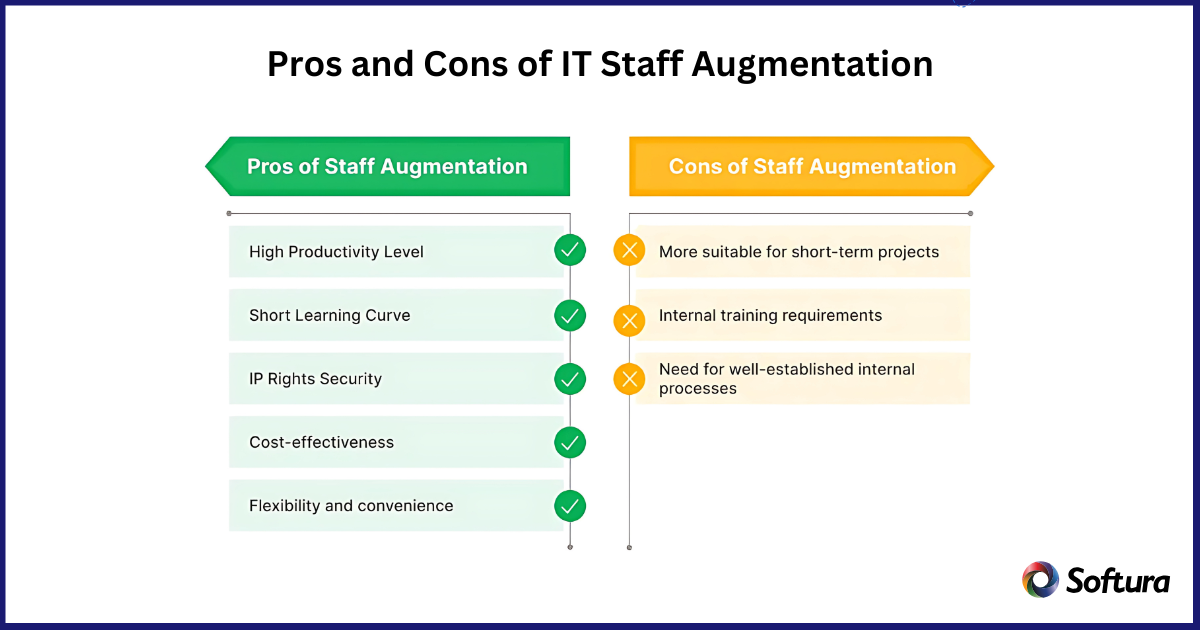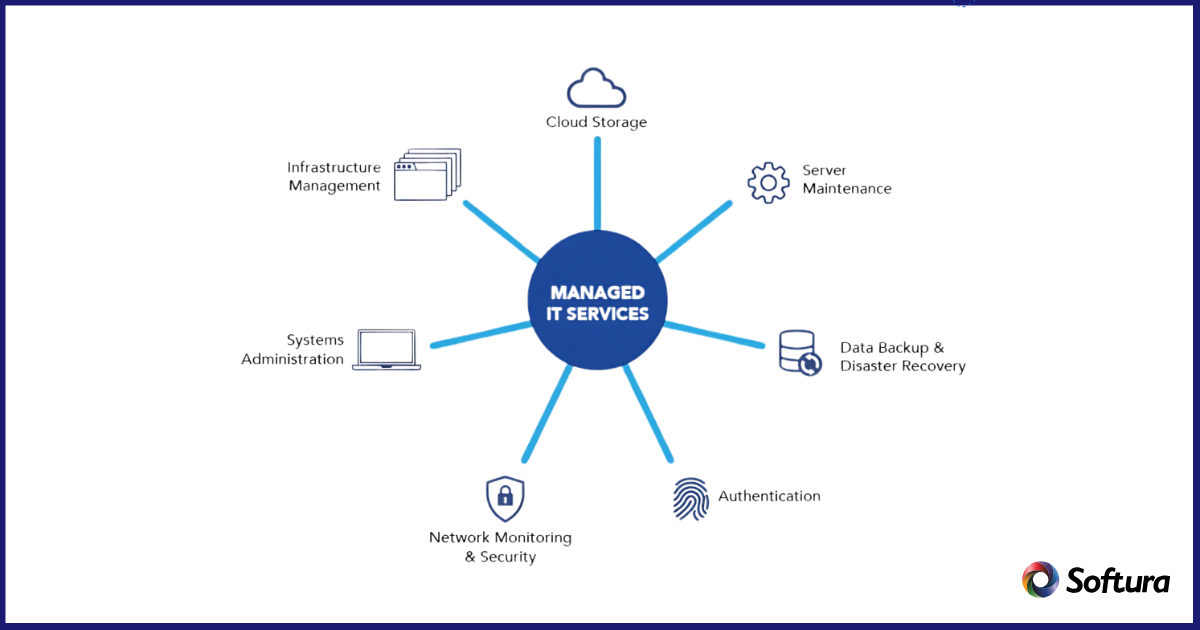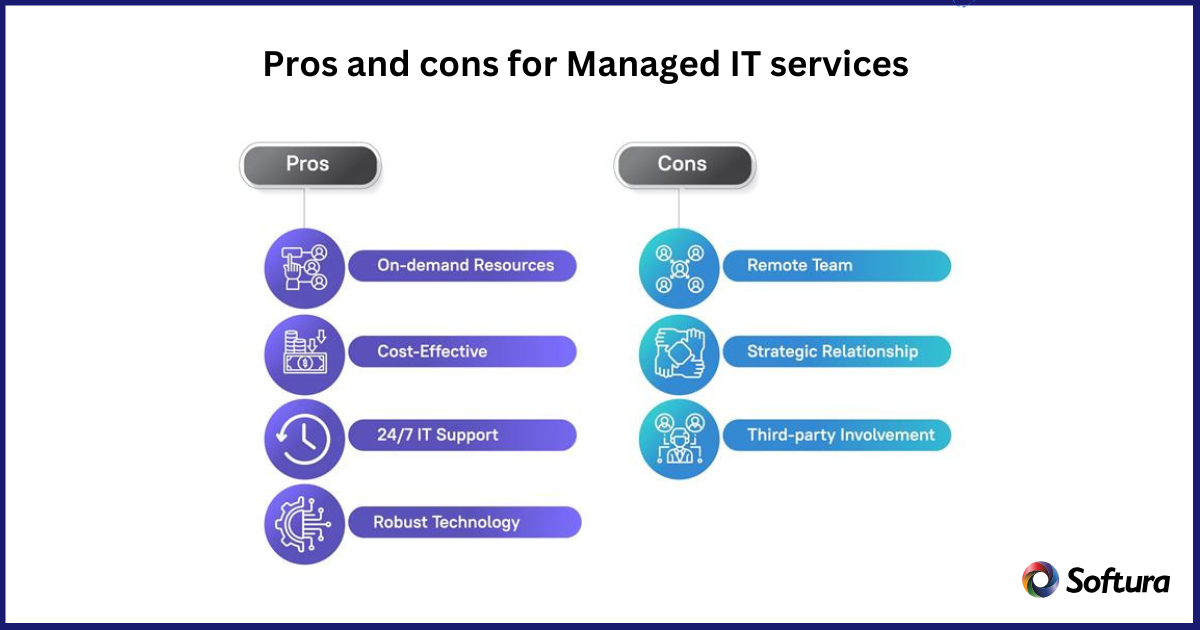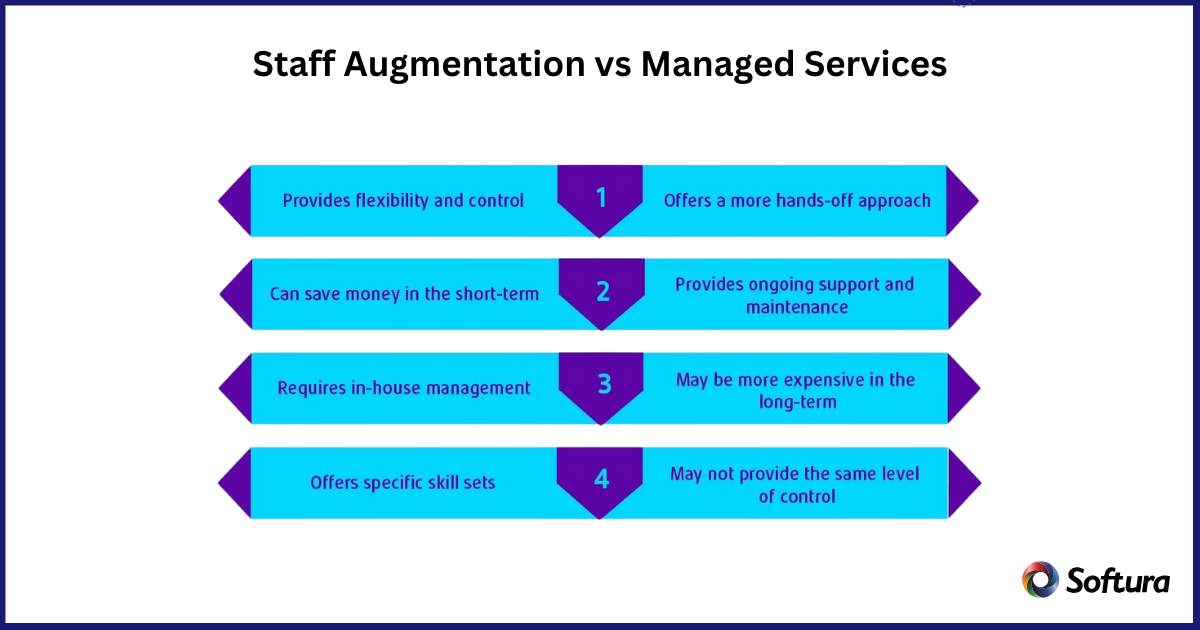"Our integration with the Google Nest smart thermostats through Aidoo Pro represents an unprecedented leap forward for our industry."
- Antonio Mediato, founder and CEO of Airzone.
IT Staff augmentation is a flexible outsourcing strategy that allows businesses to hire skilled professionals on a temporary or project basis to complement their in-house teams. Instead of hiring full-time employees, companies can scale their workforce up or down as needed, ensuring they have the right talent for specific tasks without long-term commitments. This model is particularly beneficial for businesses dealing with short-term projects, seasonal workloads, or skill gaps that require immediate expertise.
Many companies use IT staff augmentation to gain access to specialized IT professionals, software developers, designers, and engineers without the hassle of recruitment, onboarding, and employee benefits. It allows businesses to retain control over project management while leveraging external expertise to speed up development and innovation.
"Our integration with the Google Nest smart thermostats through Aidoo Pro represents an unprecedented leap forward for our industry."
- Antonio Mediato, founder and CEO of Airzone.

"By analyzing the data from our connected lights, devices and systems, our goal is to create additional value for our customers through data-enabled services that unlock new capabilities and experiences."
- Harsh Chitale, leader of Philips Lighting’s Professional Business.
Managed services refer to a complete outsourcing model where businesses delegate the management of specific IT functions to an external service provider. Unlike staff augmentation, where companies retain direct control, managed services providers (MSPs) take full responsibility for managing, monitoring, and maintaining IT operations.
This model is ideal for businesses looking for long-term IT support, infrastructure maintenance, cybersecurity, cloud management, or software application development without the need to oversee daily operations. Managed services allow businesses to focus on core objectives while the provider ensures efficiency, security, and performance.
"By analyzing the data from our connected lights, devices and systems, our goal is to create additional value for our customers through data-enabled services that unlock new capabilities and experiences."
- Harsh Chitale, leader of Philips Lighting’s Professional Business.

Looking for Offshore Dedicated Developers?
Our skilled experts are ready to help. Let's discuss your automation needs.
"By analyzing the data from our connected lights, devices and systems, our goal is to create additional value for our customers through data-enabled services that unlock new capabilities and experiences."
- Harsh Chitale, leader of Philips Lighting’s Professional Business.
End-to-End IT Management – The provider takes full responsibility, reducing the burden on in-house teams.
Predictable Costs – Fixed monthly or annual pricing eliminates unexpected IT expenses.
Proactive Monitoring & Security – Prevents downtime, cyber threats, and system failures.
Access to Advanced Technology – Businesses benefit from the latest cloud, AI, and cybersecurity solutions without investing in expensive infrastructure.
24/7 Support & Maintenance – Continuous IT support ensures smooth operations and quick issue resolution.

Less Direct Control – Since the provider manages IT operations, businesses may have limited flexibility in decision-making.
Vendor Dependency – Businesses rely on the MSP for ongoing support and innovation.
Potential Higher Costs for Small Businesses – While cost-effective in the long run, managed services may require higher initial investment.
Both staff augmentation and managed services are popular IT outsourcing models, but they cater to different business needs. Staff augmentation is ideal for businesses needing temporary or project-specific talent, while managed services work best for companies seeking long-term IT management and operational support. Below, we break down the key differences between the two models in terms of cost, flexibility, control, risk, and best use cases to help businesses choose the right approach.
Staff Augmentation: Typically involves hourly or project-based pricing, making it a cost-effective option for short-term projects. Businesses only pay for the required expertise and duration, reducing overhead costs like benefits, training, and long-term commitments.
Managed Services: Operates on a fixed monthly or annual contract, offering predictable costs for continuous IT management. While it may involve higher initial costs, managed services eliminate the need for in-house IT teams, reducing long-term infrastructure and staffing expenses.
Which is Cheaper?
Staff Augmentation: Offers on-demand scalability, allowing businesses to hire and release IT professionals as needed. This is perfect for companies with fluctuating project workloads or short-term skill gaps.
Managed Services: Provides a more structured and strategic approach to IT support. While services can be scaled, changes often require contract modifications, making it less flexible than staff augmentation.
Which is More Flexible?

Staff Augmentation: The business retains full control over project management, decision-making, and workflow execution. The augmented staff integrates into the existing team, following the company’s guidelines and leadership.
Managed Services: The provider takes full control of IT operations, handling monitoring, maintenance, and security. Businesses outsource responsibility and focus on their core objectives instead.
Who Has More Control?
Staff Augmentation: The business assumes responsibility for managing augmented staff, project risks, and performance outcomes. If an issue arises, it’s up to the internal team to resolve it.
Managed Services: The service provider is responsible for IT performance, security, and risk management. This reduces the business's exposure to operational risks, ensuring compliance and proactive monitoring.
Which Model Has Lower Risk?
The choice between staff augmentation vs managed services depends on your business goals, budget, and operational needs.
🔹 Choose Staff Augmentation if:
🔹 Choose Managed Services if:
Hybrid Approach: Some businesses use a combination of both models—staff augmentation for specific projects and managed services for ongoing IT maintenance.
Finding the right outsourcing partner like Softura is crucial for ensuring a seamless and successful collaboration. Here’s what to consider when selecting an IT service provider:
✔️ Industry Experience & Technical Expertise – Look for a provider with proven experience in your industry and expertise in emerging technologies (AI, cloud, cybersecurity, DevOps, etc.).
✔️ Reputation & Client Testimonials – Check online reviews, ratings, and case studies to gauge their credibility and past performance.
✔️ Scalability & Flexibility – Ensure the provider can adapt to your evolving needs and offer customized solutions.
✔️ Transparent Pricing & Contracts – Understand their pricing model, service-level agreements (SLAs), and contractual terms before signing an agreement.
✔️ Post-Deployment Support & Security Compliance – Choose a provider that offers ongoing support, maintenance, and security compliance for long-term success.
Choosing between staff augmentation and managed services depends on your business needs, budget, and IT strategy. If you require temporary, specialized talent for short-term projects, staff augmentation is the way to go. On the other hand, if you seek long-term IT support, security, and infrastructure management, managed services offer a more comprehensive solution.
At Softura, we provide customized software development outsourcing services to help businesses scale efficiently, reduce costs, and drive innovation. Whether you need dedicated developers for a project or a fully managed IT service provider, our expert team is ready to assist.
Contact Softura today to discuss your IT needs and discover the right outsourcing model for your business!
Are you ready for your next project?
Unlock your company's full potential with our comprehensive Offshore development services. Contact our experts today to discuss how we can drive your success together.